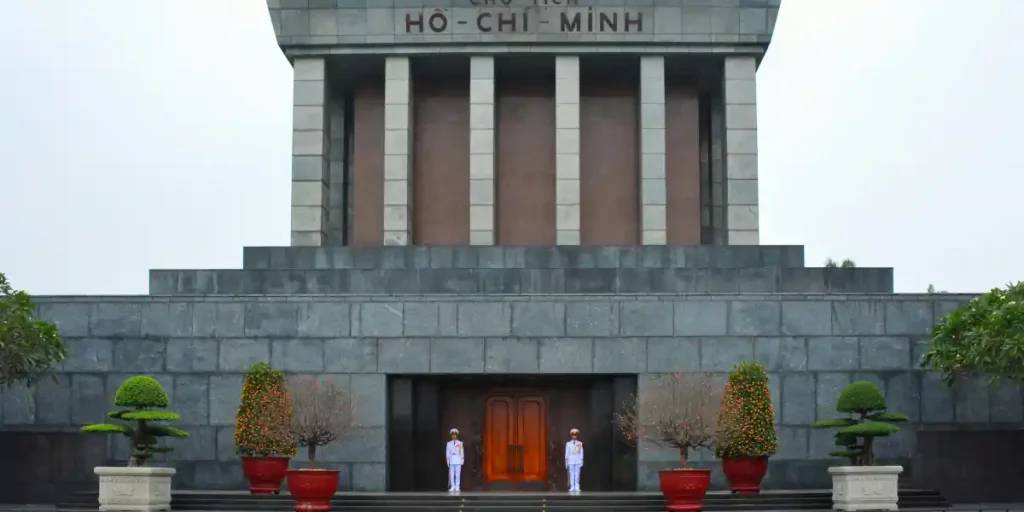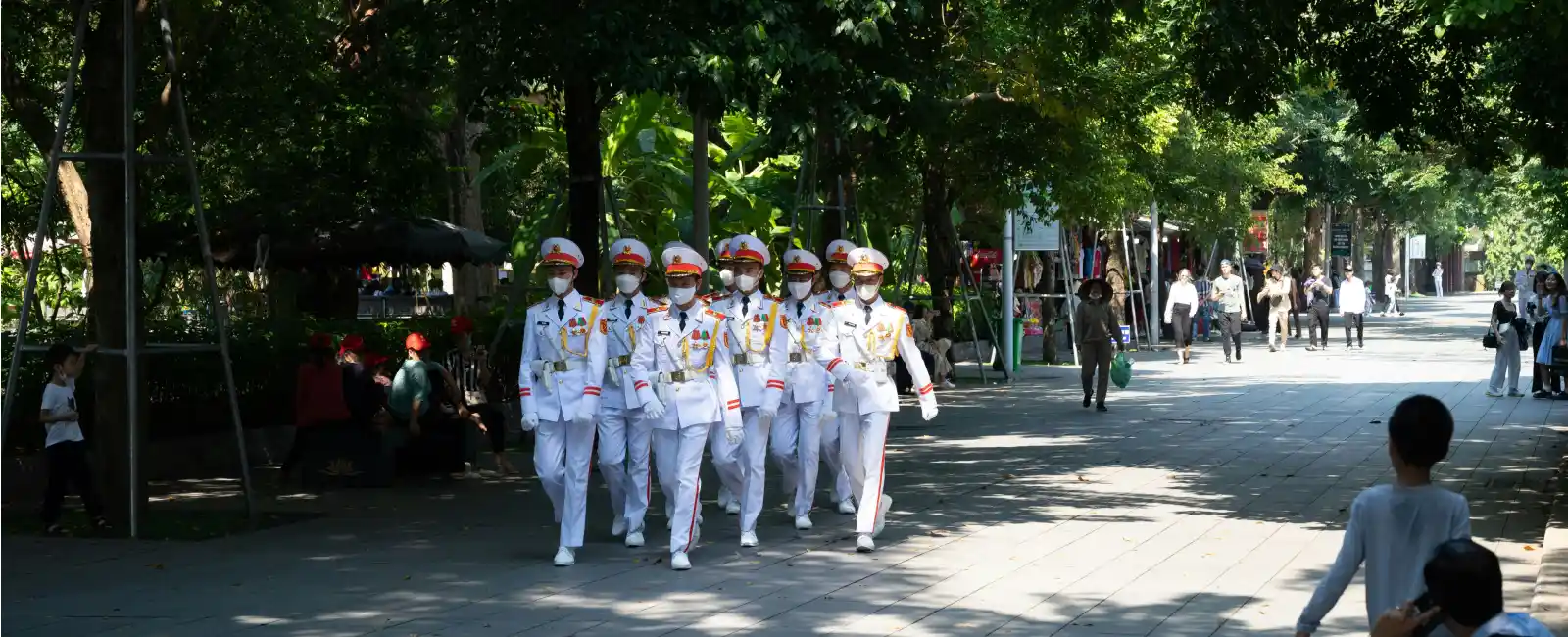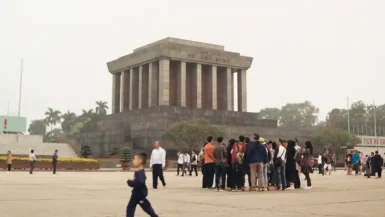The Vietnamese USA conflict, also known as the Vietnam War, was one of the most significant events of the 20th century. This conflict, which spanned from 1955 to 1975, left an indelible mark on both Vietnam and the United States. As the conflict escalated, it not only altered the lives of millions but also shaped global politics in profound ways. The Vietnamese USA conflict is a subject of endless analysis, with historians and political analysts continuing to explore its complexities. In this detailed article, we will take a closer look at the causes, events, and outcomes of the Vietnamese USA conflict, providing a comprehensive understanding of this pivotal moment in history.
The Origins of the Vietnamese USA Conflict
The Roots of Colonialism
The origins of the conflict can be traced back to the era of French colonialism. In the late 19th century, France colonized Vietnam, along with Laos and Cambodia, forming French Indochina. The Vietnamese people endured decades of oppressive colonial rule, leading to widespread resentment and the rise of nationalist movements. The Vietnamese, led by Ho Chi Minh, sought independence from foreign domination. The struggle for independence would eventually set the stage for the Vietnamese USA conflict.
The Rise of Ho Chi Minh
Ho Chi Minh, a key figure in the conflict, played a pivotal role in Vietnam’s quest for independence. He was a communist revolutionary who sought to free Vietnam from colonial rule. After years of living in exile, Ho Chi Minh returned to Vietnam and founded the Viet Minh, a nationalist organization aimed at driving out the French. Ho Chi Minh’s leadership and determination were instrumental in the fight against colonialism, which eventually led to the First Indochina War.
The First Indochina War: Prelude to the Vietnamese USA Conflict
The Fight for Independence
The First Indochina War, which lasted from 1946 to 1954, was a crucial precursor to the Vietnamese USA conflict. During this period, the Viet Minh, under Ho Chi Minh’s leadership, waged a relentless guerrilla war against the French forces. The war was brutally intense, with both sides suffering heavy casualties. Ultimately, the decisive battle at Dien Bien Phu in 1954 marked the end of French colonial rule in Vietnam. Consequently, the French defeat led to the Geneva Accords, which temporarily divided Vietnam into North and South, thereby setting the stage for the Vietnamese USA conflict.
The Geneva Accords and Division of Vietnam
The Geneva Accords of 1954 were intended to bring peace to Vietnam, but instead, they sowed the seeds of the Vietnamese USA conflict. The agreement temporarily divided Vietnam along the 17th parallel, with Ho Chi Minh’s communist government controlling the North, and a pro-Western government under Ngo Dinh Diem ruling the South. The division was supposed to be temporary, with nationwide elections planned for 1956. However, the elections never took place, leading to growing tensions between the North and South, and eventually, the Vietnamese USA conflict.
The Escalation of the Conflict
The Cold War Context
The conflict, however, cannot be fully understood without considering the broader context of the Cold War. The United States, deeply concerned about the spread of communism, therefore saw Vietnam as a crucial battleground in the fight against global communism. Moreover, the domino theory, which suggested that the fall of one Southeast Asian nation to communism would lead to the fall of others, further drove American involvement in the conflict. As tensions between North and South Vietnam escalated, the United States consequently began to increase its support for the South Vietnamese government.
The Gulf of Tonkin Incident
The conflict took a significant turn with the Gulf of Tonkin Incident in 1964. On August 2 and 4, 1964, two U.S. Navy destroyers were allegedly attacked by North Vietnamese forces in the Gulf of Tonkin. Although the details of the attacks remain controversial, President Lyndon B. Johnson used the incident to justify increased U.S. involvement in the Vietnamese USA conflict. The Gulf of Tonkin Resolution, passed by Congress, authorized the president to take all necessary measures to repel any armed attack against U.S. forces and prevent further aggression. This marked the official beginning of large-scale U.S. military involvement in the Vietnamese USA conflict.
The Americanization of the Conflict
Operation Rolling Thunder
As the conflict escalated, the United States launched Operation Rolling Thunder in 1965. This massive bombing campaign aimed to weaken North Vietnam’s ability to wage war by targeting its infrastructure, transportation networks, and supply routes. Despite the extensive bombing, Operation Rolling Thunder failed to achieve its objectives and only served to intensify the Vietnamese USA conflict. The campaign also caused significant civilian casualties, further fueling anti-American sentiment in Vietnam. Moreover, the relentless bombings devastated many rural areas, displacing countless families and destroying agricultural land vital to the local economy. The psychological impact of the continuous air raids left a deep scar on the Vietnamese population, fostering a strong resistance against the U.S. military presence.
Additionally, the destruction of key infrastructure hindered the everyday lives of the Vietnamese, further uniting the North Vietnamese and the Viet Cong in their resolve to fight back. Ultimately, Operation Rolling Thunder exemplified the challenges of waging an air war in a conflict deeply rooted in guerrilla warfare and the determination of the Vietnamese people to defend their homeland.
The Introduction of Ground Troops
The Vietnamese USA conflict saw a dramatic escalation with the introduction of U.S. ground troops in 1965. The first American combat troops arrived in Vietnam in March 1965, marking a significant shift in the nature of the conflict. What had initially been a limited advisory role quickly turned into a full-scale military engagement. By 1968, more than 500,000 U.S. troops were stationed in Vietnam, making the Vietnamese USA conflict one of the largest military operations in American history. The scale of U.S. involvement brought unprecedented levels of firepower and resources into the region, significantly altering the course of the war. This escalation also led to an increase in civilian casualties and widespread devastation across Vietnam.
The American military presence created a deep and lasting impact on Vietnamese society, contributing to the intense resistance from the North and the Viet Cong. As the conflict intensified, it became increasingly clear that the U.S. was entangled in a complex and unwinnable war, leading to growing opposition both at home and abroad.
The Tet Offensive: A Turning Point
The Tet Offensive, launched by the North Vietnamese and Viet Cong forces in January 1968, was a turning point in the Vietnamese USA conflict. The coordinated attacks on cities and military bases throughout South Vietnam shocked both the American public and military. Although the U.S. and South Vietnamese forces eventually repelled the offensive, the Tet Offensive exposed the vulnerability of American forces and undermined public support for the war.People no longer saw the conflict as a winnable war, which led to growing calls for de-escalation and withdrawal.
The Anti-War Movement and Its Impact
As the conflict dragged on, opposition to the war grew in the United States. The anti-war movement, which began on college campuses, spread across the nation, with millions of Americans protesting against the conflict. Growing casualties, the draft, and the widespread belief in the conflict’s injustice fueled the movement.The media played a crucial role in shaping public opinion, with graphic images of the war broadcast into American homes daily.
The My Lai Massacre and Its Aftermath
The My Lai Massacre, which occurred in March 1968, further fueled anti-war sentiment in the United States. American soldiers killed hundreds of unarmed Vietnamese civilians, including women and children, in the village of My Lai. The incident came to light in 1969, causing outrage and further eroding support for the Vietnamese USA conflict. The massacre became a symbol of the war’s brutality and the moral dilemmas faced by American soldiers.
The Role of Media
The media played a significant role in shaping public perception of the Vietnamese USA conflict. Television news, in particular, brought the horrors of the war into American living rooms, making it the first “television war.” Images of burning villages, wounded soldiers, and grieving families had a profound impact on public opinion. Journalists like Walter Cronkite, who declared the war “unwinnable” after the Tet Offensive, influenced the national conversation and contributed to the growing anti-war sentiment.
The Road to Peace and the End of the Conflict
Vietnamization and U.S. Withdrawal
As the Vietnamese USA conflict became increasingly unpopular, President Richard Nixon introduced a policy of “Vietnamization.” This strategy aimed to gradually reduce U.S. involvement in the war by transferring combat responsibilities to the South Vietnamese forces. Nixon also sought to negotiate a peace settlement with North Vietnam, while simultaneously expanding the war into neighboring Cambodia and Laos. Despite these efforts, the Vietnamese USA conflict continued to drag on, with no clear end in sight.
The Paris Peace Accords
The Paris Peace Accords, signed in January 1973, marked the beginning of the end of the Vietnamese USA conflict. The agreement called for a ceasefire, the withdrawal of U.S. troops, and the return of American prisoners of war. However, the peace was short, as fighting between North and South Vietnam resumed soon after the U.S. withdrawal. The Vietnamese USA conflict would continue for another two years, culminating in the fall of Saigon in April 1975.
The Fall of Saigon and the End of the Conflict
The fall of Saigon on April 30, 1975, marked the definitive end of the Vietnamese USA conflict. North Vietnamese forces captured the South Vietnamese capital, leading to the surrender of the South Vietnamese government. The event marked the reunification of Vietnam under communist control, bringing an end to decades of conflict and division. For the United States, the Vietnamese USA conflict left a legacy of deep division. The war had a lasting impact on American society, politics, and foreign policy.
The Aftermath and Legacy of the Vietnamese USA Conflict
The Human Cost
The Vietnamese USA conflict had a devastating human cost. Millions of Vietnamese civilians and soldiers lost their lives, and the country was left in ruins. The conflict also had a profound impact on American soldiers. More than 58,000 U.S. troops killed and thousands more wounded. The psychological toll on veterans, many of whom suffered from post-traumatic stress disorder (PTSD), was immense. The conflict also left a legacy of unexploded ordnance, Agent Orange contamination, and other environmental and health issues in Vietnam.
The Political and Social Impact in the United States
The Vietnamese USA conflict had a profound impact on American politics and society. The war deeply divided the nation, with the anti-war movement leading to widespread protests and social unrest. The conflict also led to a loss of trust in government. After the Pentagon Papers’ release it was obvious that the U.S. government had misled the public about the war’s progress. The conflict also contributed to the rise of the “Vietnam Syndrome,” a reluctance to engage in overseas military interventions, which influenced U.S. foreign policy for decades.
The Long-Term Impact on Vietnam
For Vietnam, the Vietnamese USA conflict had far-reaching consequences. Years of war devastated the country, leaving its economy in ruins and destroying its infrastructure.However, in the decades following the war, Vietnam embarked on a process of reconstruction and modernization. Today, Vietnam is a rapidly developing country, with a growing economy and improving living standards. The Vietnamese USA conflict, while a painful chapter in the nation’s history, has also shaped its identity and resilience.

Ho Chi Minh Mausoleum: A Monument to a Revolutionary Leader and a Stark Reminder of the War
The Ho Chi Minh Mausoleum in Hanoi stands as a solemn and powerful reminder of Vietnam’s turbulent history. This imposing structure houses the embalmed body of Ho Chi Minh, the revolutionary leader who played a pivotal role in Vietnam’s independence. The mausoleum serves as a poignant symbol of the sacrifices made during the war. The mausoleum stands as a testament to the complex legacy of the Vietnamese USA conflict. It reminds all who visit of the profound costs of war and the enduring desire for peace and unity.
Conclusion: Reflecting on the Vietnamese USA Conflict
The Vietnamese USA conflict was a complex and multifaceted event. It left a lasting impact on both Vietnam and the United States. It was a conflict that shaped the course of history, influencing global politics, military strategy, and public opinion. The Vietnamese USA conflict continues to leave a lasting impact today. By understanding the causes, events, and outcomes of the conflict, we can gain a deeper appreciation for the challenges and sacrifices of those who lived through this tumultuous period. The conflict serves as a reminder of the devastating effects of war and the importance of striving for peace.



